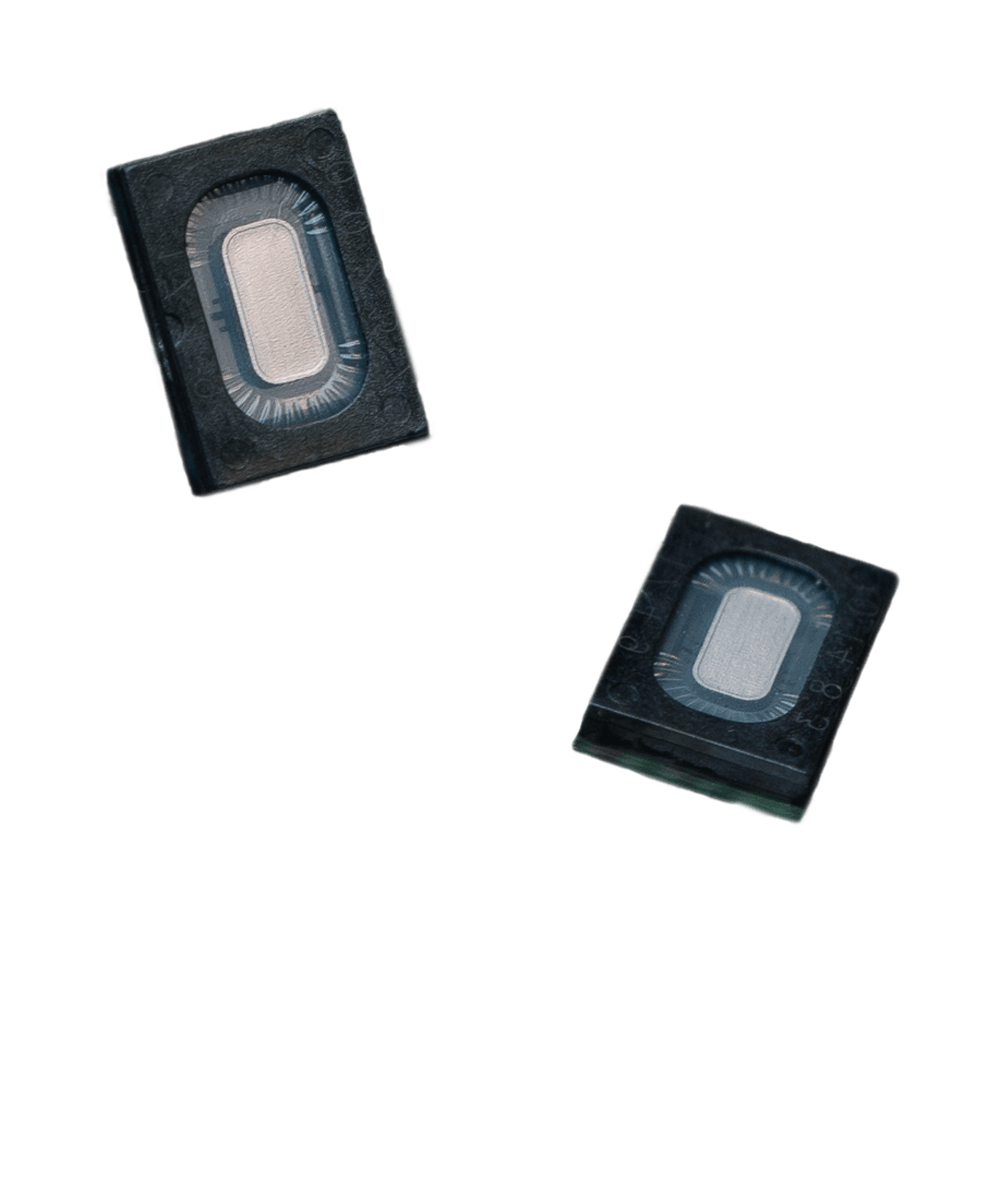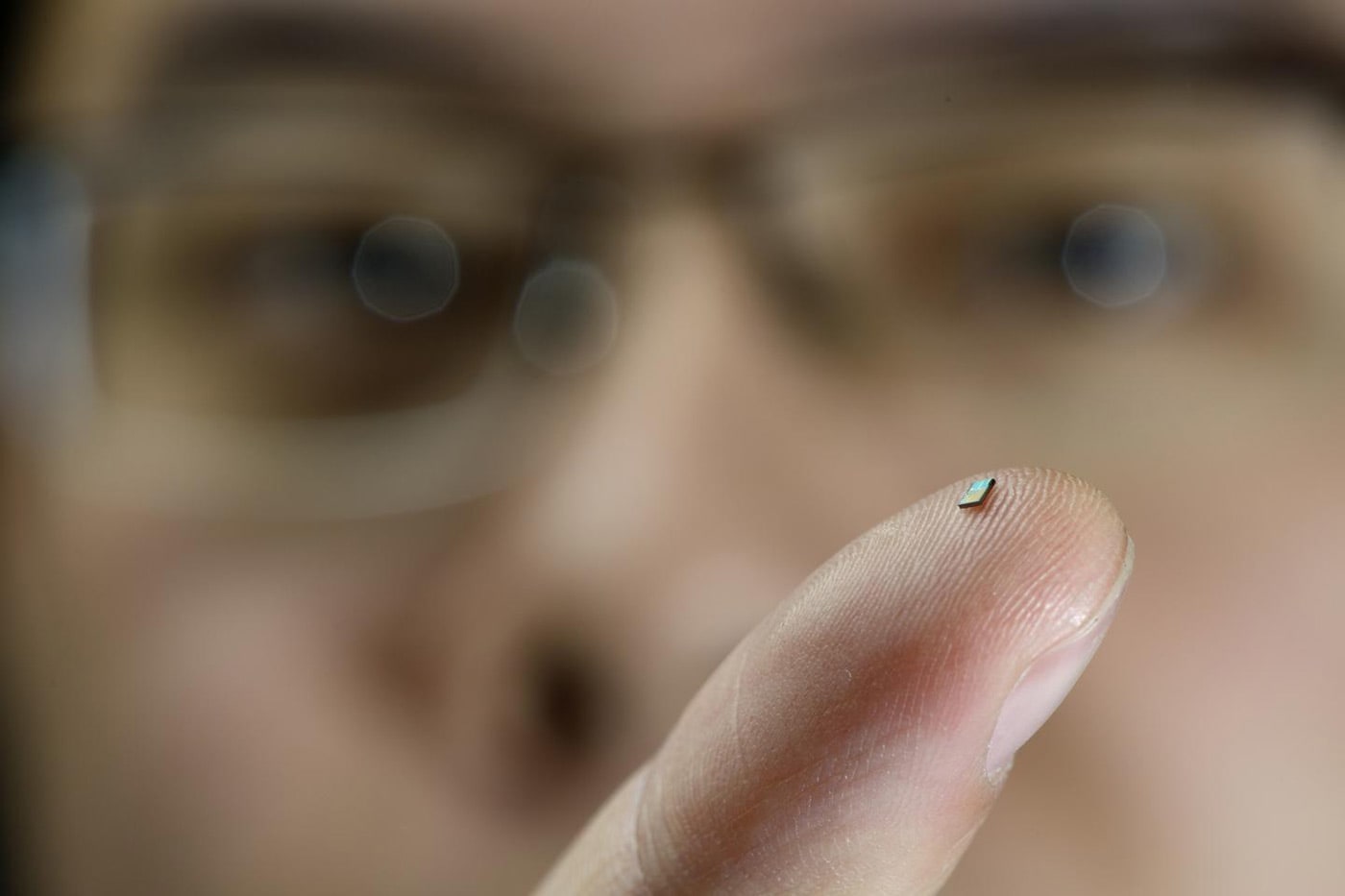Sound can be used to detect objects and communicate. This roundup looks at three MEMS-based microphones and ultrasonic sensors you might want to check out.
Note: This article has been edited to more accurately reflect the relationship between USound and STMicroelectronics.
Vesper Piezoelectric MEMS Microphones
The Vesper VM1000 and VM2000 piezoelectric microphones are low-power MEMS microphones that are stable over their lifetime and offer a very flat frequency response.
This is a critical feature for beamforming microphone arrays, where uneven or unpredictable response patterns negatively affect the performance of the array and leave a device with less than satisfactory performance over time. This is an advantage for OEMs that wish to incorporate these microphones in their devices, as they do not have to match microphones or design circuits that compensate for drift over time.
Vesper’s Mems microphone from vespermems.com
The Vesper VM1010 wake-on-sound piezoelectric microphone consumes a negligible 10µA of electric current in power-down mode and can wake devices when sound energy impacts the piezoelectric microphone element. This microphone actually uses the energy generated by sound to wake the system via a low-power comparator circuit.
Current sound-activated devices (Google Home, Amazon Alexa, etc.) consume dozens to hundreds of milliamps while in their power down mode—this is because a microphone and an ASIC must stay active to listen for the wake-word. For devices that spend most of their time in an inactive state (television remote controls, baby monitors), the power saved from using this technology is significant.
Ultrasonic Sensors from Chirp Microsystems
Chirp Microsystems, Inc., a TDK Group Company acquisition, produces two ultrasonic time-of-flight sensors that provide sub-millimeter accuracy over a range of 1m (CH101) and 5m (CH102). This device uses an ultrasonic transducer array tied to an application specific integrated circuit (ASIC) to emit a swept-frequency pulse and then detect the reflection off of distant objects. Since the sensor is composed of an array rather than a single transducer element, engineers are able to track movements and gestures in two-dimensions.
Chirp Microsystems ultrasonic sensor. Image courtesy TDK.
This technology allows touch-free user interfaces with tablets, phones, and Internet-of-Things devices using gestures such as waves and pointing.
In the coming years, ultrasonic sensors will compete with light-based sensors to provide gesture-recognition in the devices we see and use every day. You can check out a video on the chirp sensor
here.
MEMS Micro-Speakers from USound
Earlier this year, USound partnered with STMicroelectronics foundry to demonstrate a first in the audio space with the first MEMS loudspeaker. These tiny speakers are notable for several reasons, including their size, large bandwidth, and changes to typical piezoelectric speaker designs.
Below are three gifs from
USound representing the effect of electric fields applied to piezoelectric crystals (1), the use of cantilevers USound is using to replace the coils used in typical piezoelectric speakers (2), and the membrane layer and plate layers that allow sound generation, driven by piezoelectric materials eliminating the need for signal processing (3).
1) Piezoelectric crystals change shape when exposed to electric fields
2) USound adds cantilevers to translate the movement of piezoelectric materials into the movement of a piston
3) The membrane/plate layer allows sound generation
In a
press release, STMicroelectronics and USound asserted that "The new devices also eliminate the usual trade-offs between magnet size, air volume, and sound quality that complicate both the design and integration of traditional, conventional electro-mechanical miniature speakers that contain a magnet and balanced-armature mechanism." The speakers, which are expected to require lower power than traditional designs, are made of silicon, making them more familiar to designers looking for high-yield manufacturing; The press release compares the fabrication process to that used for CMOS chips.
While these speakers could find use in many different applications, Usound is currently developing multiple form factors that will allow these tiny speakers to appear in various devices such as earphones, AR/VR headsets, and more.
The first samples of these speakers were shipped out in January, just before showcasing the technology at CES 2018.
Have you had the opportunity to incorporate any comparable devices into your projects? Do you have any tips and tricks to share when working with audio components? We'd love to know in the comments below!

:no_upscale()/cdn.vox-cdn.com/uploads/chorus_asset/file/13691635/Wiliot_Battery_free_Bluetooth_Tag.jpg)







